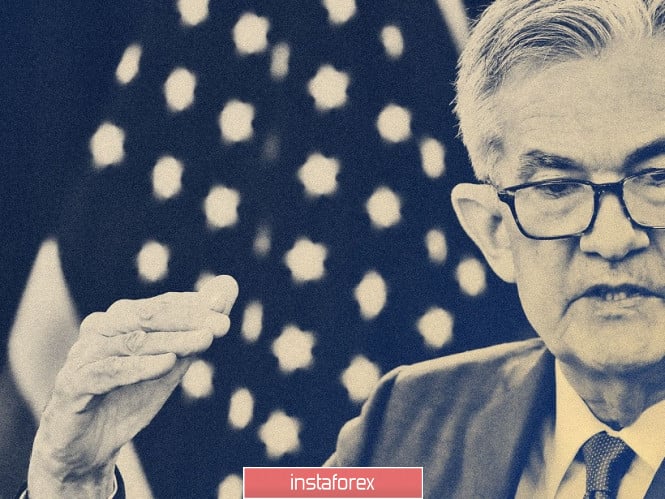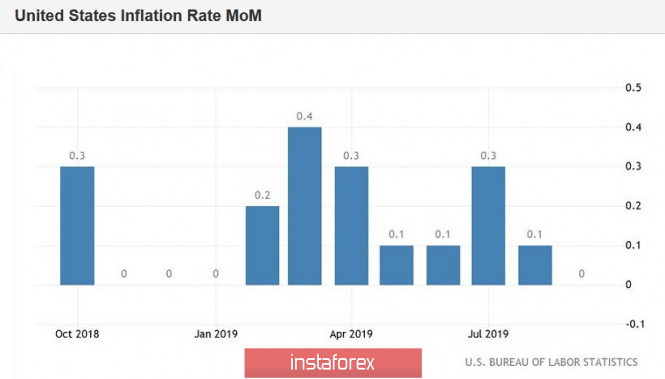The euro-dollar pair has been trading flat for the second day in anticipation of a key event of the current week. We are talking about the October meeting of the Federal Reserve, following which Jerome Powell will hold the next press conference. Let me remind you that earlier (before the beginning of 2019), the Fed chairman spoke with journalists only after four meetings out of eight scheduled for the year. Over the years, the market has become accustomed to the fact that key decisions or intentions were voiced precisely at extended meetings, when the head of the Fed could give relevant comments and further clarify a particular position. The rest of the meetings, as a rule, were obviously "passing" - traders did not expect anything unusual from them.

But the situation has changed since January this year: Powell decided to hold briefings at the end of each meeting, so traders assess the likelihood of one or another regulator's move on the eve of each meeting of Fed members. However, there is little doubt about the outcome of tomorrow's meeting: with a 95% probability, the US central bank will lower its interest rate by 25 basis points. This fact will not surprise any participant from the market, and the dollar is unlikely to demonstrate high volatility. Over the past few weeks, there have been too many factors that indicate the feasibility of this step on the part of the Fed: conflicting Nonfarm, a weak increase in inflation indicators and a record low value of production ISM. The members of the Federal Reserve for the most part did not deny the presence of a high probability of easing monetary policy at the penultimate meeting this year.
Therefore, the main intrigue of tomorrow's meeting is different. Traders are interested in the further steps of the US regulator - both this year and early next. Here, the opinions of analysts are divided. According to some currency strategists, the Fed will take a break after the October rate cut. Others believe that at the beginning of next year, the central bank will once again lower the rate. Jerome Powell warned in the summer (on the eve of the first decline) that the regulator would adjust the interest rate "for preventive purposes" - that is, the long-term cycle was not discussed initially. The most sensitive areas of the US economy have already responded to the Fed's first steps in this direction. The results of the US-Chinese talks also speak in favor of the Fed's wait-and-see attitude. And although the parties could not conclude a deal, they took several steps towards each other and did not allow another escalation of the trade war.
In addition, lowering the interest rate further, the Federal Reserve risks narrowing the space for maneuver, which may come in handy in the future (for example, if the US and China resume a trade conflict with renewed vigor). Before the start of the trade war, the US regulator managed to reduce the balance sheet and raise the interest rate, so it "has room to retreat." In this regard, its position looks somewhat more profitable relative to many other central banks of the leading countries of the world.
In other words, Jerome Powell will certainly not be in a hurry with further decisions, at least in the context of the December meeting. However, according to some experts (in particular, ING), the regulator will still resort to another round of rate cuts at the beginning of next year, and then take a break until the end of 2020.
Proponents of this scenario primarily indicate the dynamics of US inflation. The consumer price index published in October was indeed very weak. The overall monthly index unexpectedly slowed to zero, contrary to growth forecasts to 0.1%. In annual terms, the CPI remained in place: in September, the indicator reached 2.4% YOY, although economists had expected growth to 2.5%. Core inflation was also disappointing. The core index, excluding food and energy prices, fell more than expected. In monthly terms, the index reached 0.1% last month, although experts predicted more substantial growth. Slowing core inflation is an alarming sign, especially amid slowing wage growth. Let me remind you that the inflationary component of Nonfarm also disappointed the market, being in the red zone. Now the negative picture was supplemented by an inflationary release.

It is very likely that the "softness" of the Fed's rhetoric will also depend on preliminary data on the growth of the US economy in the third quarter (the release is expected tomorrow, October 30, at the start of the US session). According to general forecasts, US GDP growth will significantly slow - to 1.6% (after falling to 2% in the second quarter). If this forecast is true, it will be the weakest growth rate since the fourth quarter of 2015.
Thus, given the totality of fundamental factors, we can assume the following. After lowering the interest rate following the results of the October meeting, Jerome Powell, most likely, will not announce further steps in this direction. He will again remind reporters that the regulator does not make decisions "ahead of time", so everything will depend on current conditions. In addition, given the weak growth in inflation, Nonfarm and (possibly) US GDP in the third quarter, the tone of the accompanying statement will become more dovish (pessimistic).
The market may interpret this fact as a signal for further easing of monetary policy, after which the dollar will be under significant pressure. If Powell sufficiently clearly signals a long-term pause in this matter, then the demand for the US currency will sharply increase, despite the third rate cut this year. Therefore, it is advisable to make trading decisions on the EUR/USD pair not based on the results of the Fed meeting, but following the results of Jerome Powell's press conference, since the fundamental picture for the dollar can change significantly.
The material has been provided by InstaForex Company - www.instaforex.com